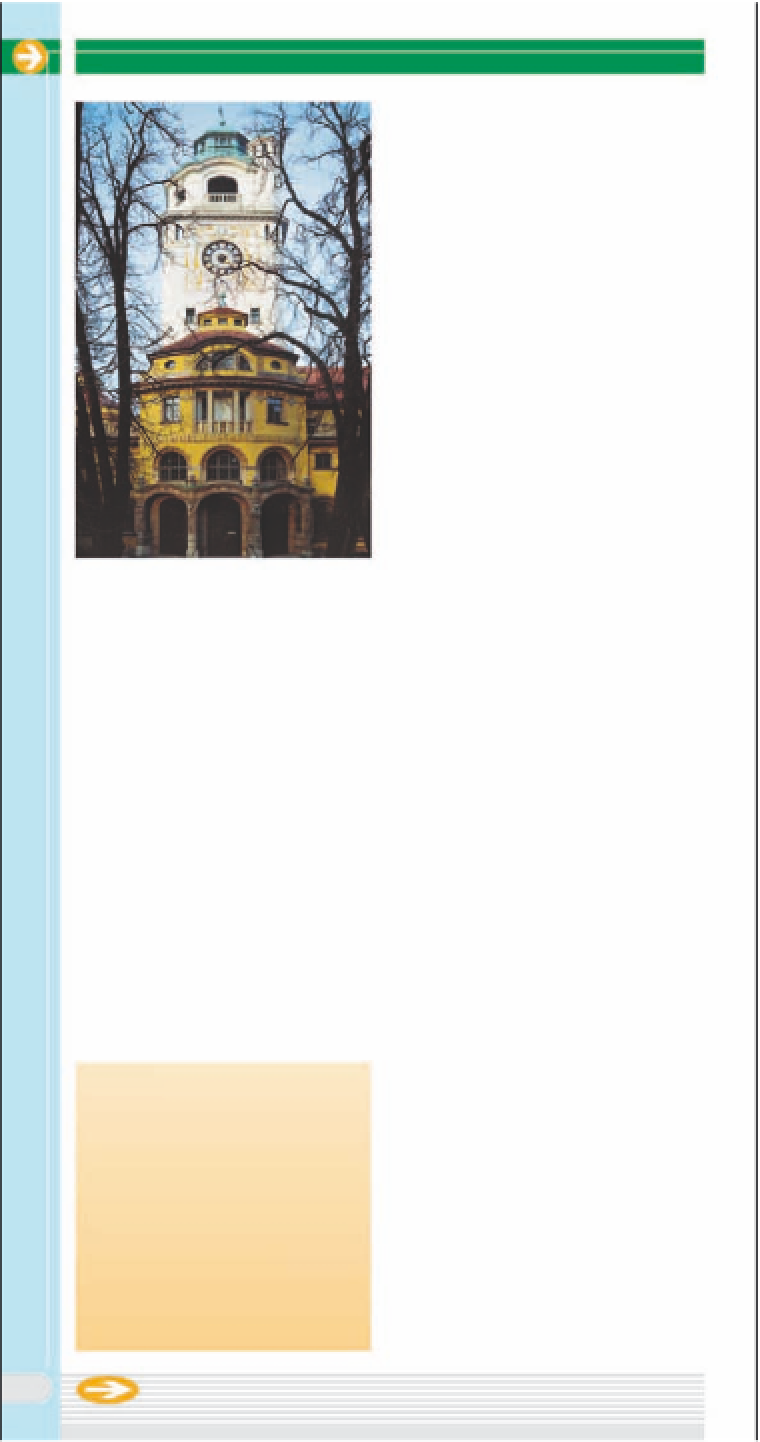Travel Reference
In-Depth Information
&
Deutsches Museum
Looking diagonally across
from the Müller'sche Volksbad,
the island seen in the Isar is
home to the largest museum of
technology in the world. Eighty
per cent of the Deutsches Museum
was destroyed in World War II;
however, the doors to the collec-
tion were open again by 1948.
Plan at least a full day to see the
principal exhibits
(see pp8-11)
.
*
Praterinsel &
Alpine Museum
Immediately adjacent to the
museum island is another small
island, Praterinsel. The Alpine
Museum, run by the German
Alpine Association, is located on
Praterinsel. It documents the
history of mountaineering and
features special exhibitions
throughout the year. A teaching
garden displays the various
types of rock found in the Alpine
regions. Old factories on
Praterinsel - in the former
Riemerschmid distillery - have
been converted into a cultural
centre with artists' studios. The
ensemble is home to ongoing
exhibitions and special events,
such as the Comicfest. Tango
fans gather in the courtyard on
summer nights to enjoy this
most sensual of dances.
d
Map N5
(
Isar Bridges
Müller'sches Volksbad
^
Müller'sches Volksbad
Named after Karl Müller - a
private citizen who financed the
project - this Art Nouveau bathing
temple was built from 1897 to 1901
and is based on a design by Carl
Hocheder. It was the first public
pool in the city and is still one of
the most beautiful today. The pool
was divided into a men's and a
women's area: the men's pool
has a barrel vault, the women's a
large cupola. It is worth going for
a swim just to see the interior
and the facilities - which include
therapeutic baths and a Roman
steam room. Afterwards, drop by
Café im Volksbad.
d
Map N5
From the bridges that cross
the Isar you can enjoy wonderful
views of the river and the
cityscape. One of the most
historically important is the
Ludwigsbrücke, between
Deutsches Museum and
Müller'sches Volksbad. Henry
the Lion ordered that the bridge,
built in 1157-58 by the Bishop
of Freising, be demolished (it
was located near today's
Glasscherben District
Haidhausen used to lie
beyond the city boundaries. A
poor, rural village, it was referred
to as a “Glasscherbenviertel” or
“broken glass district.” After 1871,
French reparation payments
launched development in this
area, which explains the names of
streets in the district - such as
Pariser Str., Sedanstr., Bordeau-
platz, and Metzstaße.
98
For details on the fascinating history of the Praterinsel and its
monkish origins, visit
www.praterinsel.de


































